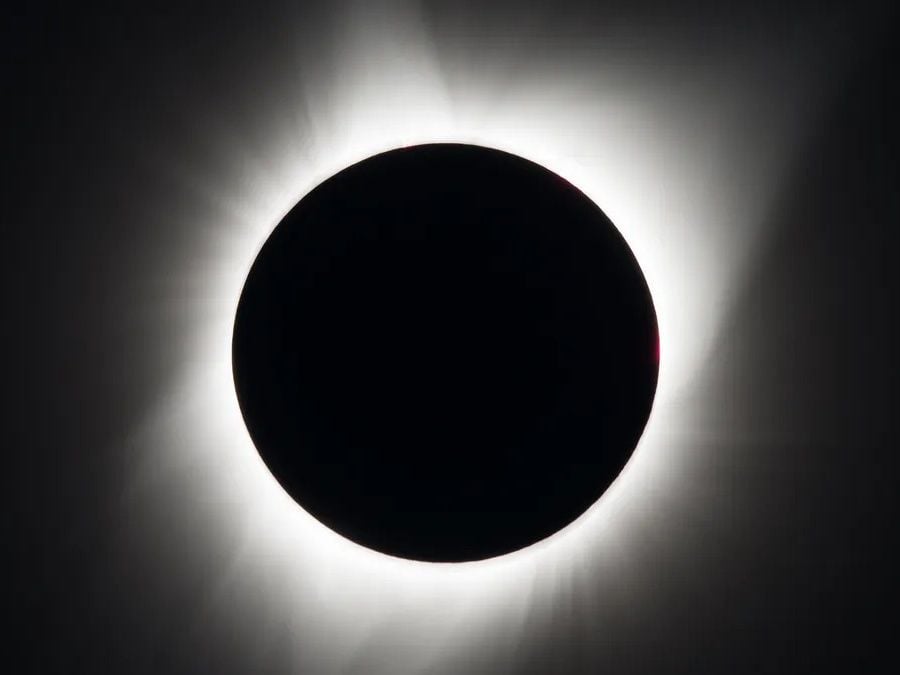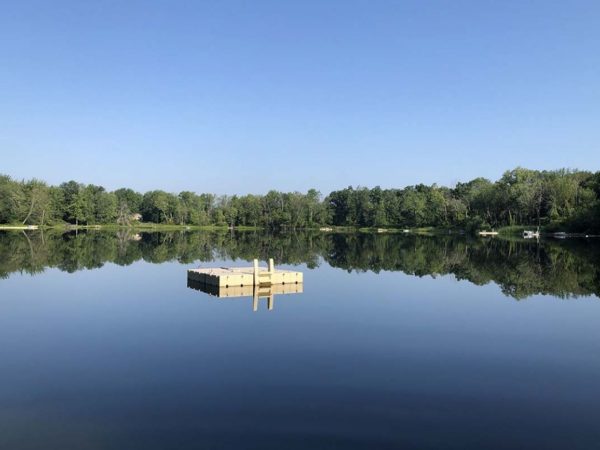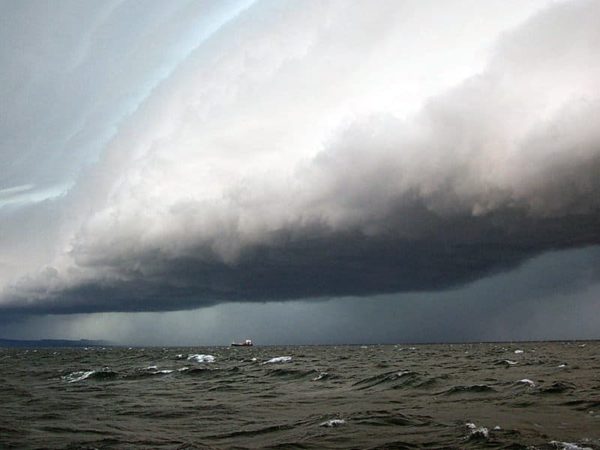
On April 8, a solar eclipse will march from Mexico to Maine, darkening the skies during midday. The moon’s shadow will black out the sun completely just south of Michigan, but folks in the southeast part of the state will be close to the action and also experience almost complete darkness.
Seven years ago, Michiganders saw a partial — but still dazzling — eclipse show. David Bydlowski, a science consultant at Wayne RESA and a NASA Partner Eclipse Ambassador, recalled that his viewing experience was a little different than most.
“I had jury duty that day, but they let us out about noon,” he said. Before rushing home to watch the event, he made a stop at Campus Martius Park. Armed with a bunch of eclipse glasses, he walked around, handing out protective eyewear and talking about the afternoon’s eclipse. “It was one of the best teaching moments I ever had,” he recalled, chuckling.
This year, Bydlowski is participating in a more formal educational effort. He is partnering with area schools and the Detroit Public Library to promote science experiments that schools and community members can do during the eclipse. It’s all part of NASA’s GLOBE Observer Program — an international science and education program aimed at engaging people to connect with earth science.
The upcoming eclipse is a perfect opportunity to turn backyards and parks into laboratories for science experiments. Each day, the sun’s energy acts as a powerhouse for all sorts of actions on the planet, from surface temperatures to weather. Although complete darkness only lasts for minutes, big changes happen in the atmosphere and land surface.
“From other solar eclipses, we know that when the sun gets blocked by the moon, the amount of radiation from the sun is reduced,” said Kevin Czajkowski, a professor at the University of Toledo.
Czajkowski explained that during the event, temperatures on the ground and in the air drop, triggering changes in wind and cloud cover.
Recording these changes, along with what type of land cover is around you (say, parking lots or forests) can help scientists better understand what happens to the atmosphere above certain land covers.
Under the GLOBE program, teachers around the country are moving their science classrooms outside. Five out of the 8 Great Lakes states will be in (or very near) the path of totality: New York, Pennsylvania, Ohio, Indiana, and Michigan. With a front-row seat to the eclipse, Michigan and Ohio schools have been preparing for months.
Bydlowski and Czajkowski have been busy running teacher training for educators in the area and meeting with public museums, libraries, and zoos. As part of the GLOBE efforts, the AREN project brings NASA-type technology and experimentation to the classroom. AREN training allows teachers to create opportunities for students to conduct experiments, and their data is used in future global scientific research.
In addition to the teacher trainings, a grant funded by AREN will provide eclipse glasses for students all over the Detroit Metro Area. (The protective eyewear is a must for viewing the gradual blockage of the Sun — regular sunglasses do not provide enough eye protection.)
It’s not just students who can help collect data and observe what happens on the Earth as the Sun is blocked out. Citizen scientists — people who are interested in how the world works and want to share information with scientists — can also participate in experiments during the eclipse.
Those who want to participate in the great science experiment should download the “GLOBE Observer” app and grab an air temperature thermometer. During the event, you can record cloud cover and air temperature measurements in the app while joining thousands of other citizen scientists across the country. For the 2017 solar eclipse, the GLOBE program had more than 10,000 citizen scientists across the country measuring their site conditions.
For those who’d like to go one step further, a little training and equipment will allow you to measure changes in surface temperature. Czajkowski said you’ll need an infrared surface thermometer — you may have one in your toolbox (or even your cooking drawer from the time you made homemade pizza) — and a bit of training from the GLOBE program.
Along with his students, Czajkowski has been busy training people from schools, universities, and libraries to use their infrared thermometers. “We’ll have 100 locations during the solar eclipse [measuring] surface temperature,” he said.
The eclipse enthusiasm is not waning, and until the event, Bydlowski, Czajkowski and their NASA Ambassador colleagues will be holding workshops and trainings to get as many people involved as possible.
“I think [the eclipse] is a real opportunity to get a unique experience into our world, into our natural system—it’s amazing,” said Bydlowski.
For more information on how to get involved:
2024 solar eclipse is 1 month away: See its path, where to find glasses, how to prepare
Catch more news at Great Lakes Now:
Where to see rare solar eclipse in Ohio
Where will you be for the April 8 total solar eclipse? There’s still time to grab a spot
Featured image: The 2017 total solar eclipse as seen from Madras, Oregon. (Photo Credit: NASA/Aubrey Gemignani)




